Eclettismo varalliano
L’opera di Antonio d’Enrico, meglio conosciuto come Tanzio da Varallo, certamente ora non riserva grandi sorprese, ma qualche notazione, credo, sia ancora possibile per qualche referente meramente stilistico; quindi alcune opere potrebbero ancora essere rapportate a qualche modello iconografico e luministico. Per il San Giovanni Battista(Fig.1), credo fermamente che il Nostro abbia ben guardato durante il suo periodo romano, il Mosé(Fig.2) di Michelangelo, che poi ha certamente reinterpretato per la postura, ma Tanzio vede anche ai Nudi(Figg.3-4) michelangioleschi per la postura del suo San Lorenzo(Fig.5), come coglie l’Arrotino(Fig.6) degli Uffizi per l’aguzzino in primo piano; ma a Tanzio non sfugge la luce argentea di Veronese(Figg.7-9), che adotta per il suo San Lorenzo(Fig.1), già visto, come per altre tele come il San Sebastiano(Fig.10), il San Carlo Borromeo(Fig.11). Quindi i modelli durante le permanenze furono molti e Tanzio li colse e mutuò secondo la commissione. Inoltre opera anche con secoli differenti ma idonei per la valutazione complessiva di spunti da assumere; quindi non tralascia Raffaello, e la sua vaticana Disputa del Sacramento(Fig.12) e neanche il Rubens romano di Santa Maria in Vallicella(Fig.13), ripresi per la composizione ed un santo nella pala con Santi in adorazione della Trinità(Fig.14), adottati rispettivamente per la composizione semicircolare del registro superiore e per la cromia della veste del santo in primo piano. La sua presenza in Roma è attestata da L. A. Motta, nel suo Museo Novarese[1], nel quale possiamo leggere a proposito di Tanzio: Nelle Accademie di Roma hebbe il Tanzio li principij, e l’inoltramento a grandi cognitioni: ma;Abandónatele in tempo che cola come in largo campo di conoscieintia»virtù potea maggiormente spiegar l’ampiezza delle sue nobili idee, ritrassi alla patria…; quindi Tanzio ebbe la sua esperienza romana e potè vedere i modelli qui rilevati.
Alessandro Lusana
Varalliano Eclecticism
The catalogue of Anthony of Henry, better knew as Tanzio from Varallo, surely now doesn’t reserves surprise, but few notation, I think, is possible for few stylistic referent; therefore any painting would can relate to some iconographical models and models of light. For the Saint John Baptist(Fig.1) I am firmly convinced that Tanzio has looked, during his roman permanency, Moses(Fig.2) of Michael Angel, whose Tanzio has reinterpreted the posture, but Tanzio looks to Naked(Figg.3-4), on the vault of Sistine chapel for his Saint Lorenz(Fig.5), as he take the Knife grinder(Fig.6), at Uffizi, for jailor on the first plane of painting; but Tanzio take light of Paolo Caliari, called the Veronese(Figg.7-9), too, which Tanzio uses for his saint Lorenz(Fig.1), abovementioned, as for other painting as Saint Sebastian(Fig.10) and Saint Charles Borromeo(Fig.11). Moreover Tanzio takes different centuries but suitable for few consideration of models to employ; then doesn’t leaves Raffaello, and his Dispute on the Sacrament(Fig.12), as Roman Rubens at Saint Mary in Vallicella(Fig.13), this painting Tanzio has took for composition and a Saint for the altarpiece with Saints worship the Trinity(Fig.14), used for semicircle on the high register and for colour of cloth Saint on the first plane. Therefore the models during the permanencies for Tanzio was very much, and Tanzio took them and changed for every commission. The presence to Rome of Tanzio has documented by an author of XVIII century, L. A. Motta[2], at his Museo Novarese, where he speaks around Tanzio: At the Roman Academies Tanzio had the principles, and beginning to acknowledge: but; leaved for fast time, virtue can explain the largeness of his noble ideas, he go back to his city…Therefore Tanzio has an Roman experience and he can looked the models here took.
Alessandro Lusana
[1] L. A. Motta, Museo Novarese, Milano 1701, p.285.[2] See note 1



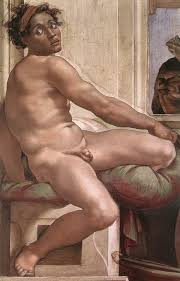
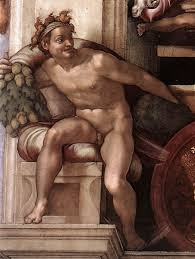
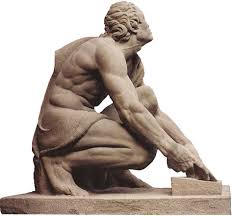
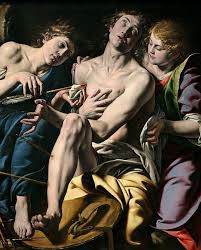





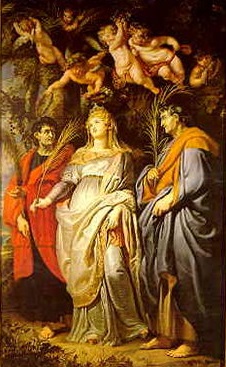



.jfif)
No comments:
Post a Comment